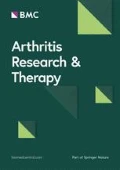The lipoxin A4 receptor (ALXR) is expressed in fibroblast-like synoviocytes and is targeted by both antiinflammatory and proinflammatory endogenous ligands. Recently, annexin-1 (lipocortin) has been identified to be an ALXR ligand. Uteroglobin (Ug) is secretoglobin that shares with annexin-1 properties such as potent inhibition of phospholipase A2 (PLA2) as well as sequence similarities in the 'antiflammin' consensus region. Potential receptor interactions of Ug with ALXR were therefore investigated and PLA2 activity assays were performed in CHO and HL-60 cell lines stably overexpressing ALXR. Serum amyloid A (SAA), an ALXR ligand displaying proinflammatory activities, was compared with two antiinflammatory ligands, Ug and lipoxin A4 (LXA4). While Ug and LXA4 did not alter baseline PLA2 activity (Ug) or provoked a pulsed peak of activity (LXA4), SAA did induce a delayed and prolonged activation of PLA2. SAA-induced PLA2activation was sharply inhibited in the presence of Ug. Ug inhibition of SAA-dependent phospholipase activity occurred at submillimolar Ca2+ concentrations, suggesting an effect on cytosolic PLA2 (rather than secretory PLA2, a known target inhibited by Ug and annexin-1 but requiring millimolar Ca2+). Studies of Erk, p38 and AKT kinase phosphorylation confirmed that SAA and Ug interact with ALXR to oppositely regulate GPCR-coupled downstream signaling events. Overall the analysis of phospholipase D activity, kinase phosphorylation and cAMP levels also suggested that proinflammatory and antiinflammatory ligands of ALXR engage differently coupled pathways, leading to activation of these processes (SAA) or to their inhibition (LXA4 and Ug). These signaling events are functionally matched by the ability of SAA to stimulate NF-κB activity, IL-8 release and cell chemotaxis, and that of LXA4 and Ug to strongly inhibit them. Expression of Ug and SAA mRNAs was also detected in human fibroblast-like synoviocytes, suggesting that ALXR may play a pivotal role in the pathophysiology of arthritis. In addition, annexin-1 and Ug inhibition of PLA2 offers enticing new venues to control inflammatory arthritides by limiting, for example, cascade signaling amplification via synthesis of proinflammatory eicosanoids, along with a redirection of ALXR signaling toward antiinflammatory feedback mechanisms.
Acknowledgements
This work was supported by NIH-NIAMS (AR-45931 to SF) and the Arthritis Foundation (National Postdoctoral fellowship to SSS).
Author information
Authors and Affiliations
Rights and permissions
About this article
Cite this article
Antico, G., Sodin-Semrl, S., Varga, J. et al. ALXR, a common GPCR gateway for antiinflammatory and/or proinflammatory cell activation: relevance of selective kinase and phospholipase signaling by uteroglobin, lipoxin A4and serum amyloid A in ALXR-mediated chemotaxis. Arthritis Res Ther 6 (Suppl 3), 11 (2004). https://doi.org/10.1186/ar1345
Published:
DOI: https://doi.org/10.1186/ar1345

